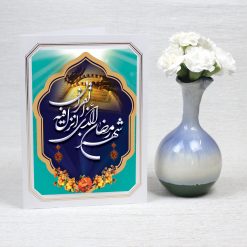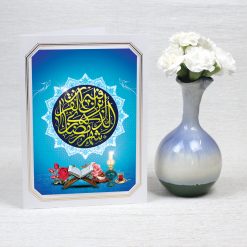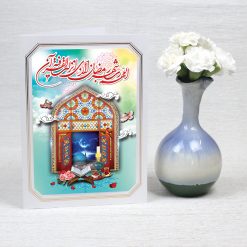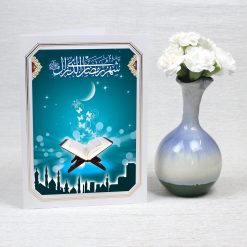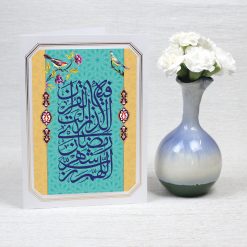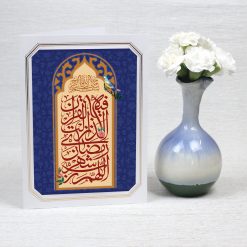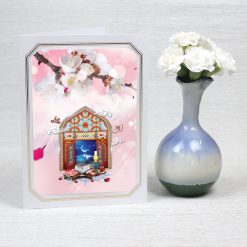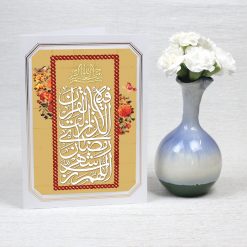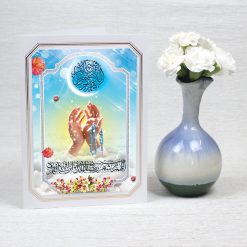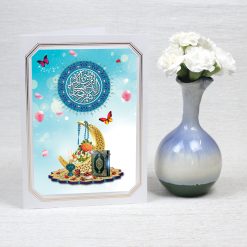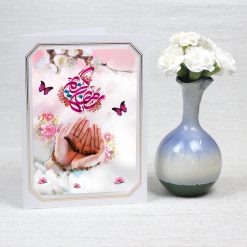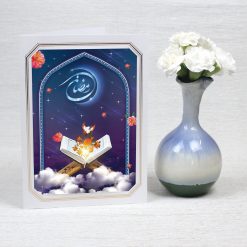Ramadan Postcards
Ramadan Postcards
Ramadan Postcards: Celebrate the Holy Month with Beautiful Greetings
Ramadan Postcards are a cherished tradition during the holy month of Ramadan, allowing Muslims around the world to exchange heartfelt greetings with their loved ones. These beautiful cards serve as a tangible representation of love, peace, and blessings during this auspicious time. In this article, we will explore the history, features, types, and benefits of Postcards, as well as highlight some popular brands in the market.
History of Ramadan Postcards
Sending greetings during Ramadan has been a long-standing tradition within the Islamic culture. It is believed to have originated during the early Islamic civilization, where people would exchange written messages and wishes of peace and prosperity. Over time, this practice evolved into the creation of visually appealing Ramadan postcards that conveyed the essence of the holy month.
Features and Specifications of Ramadan Postcards
Ramadan postcards come in various designs, incorporating traditional motifs and contemporary elements. The choice of design often reflects the cultural and artistic heritage of the region. These postcards are usually printed on high-quality on 300gsm white glossy cardboard or white metalized cardboard, ensuring durability and an elegant appearance. The size and dimensions vary, with standard options available as well as larger or smaller variations to suit individual preferences.
Types of Ramadan Postcards
postcards can be categorized into three main types: traditional, modern, and personalized. Traditional designs often feature intricate calligraphy, mosque motifs, and symbolic representations of the crescent moon and stars. Modern postcards may incorporate vibrant colors, geometric patterns, and innovative typography. Personalized options allow individuals to add their own photographs, names, or personalized messages to create a unique and memorable greeting.
How This Postcards Work
The process of creating Ramadan postcards involves professional printing techniques and quality control measures. Our designers collaborate to create captivating visuals that capture the essence of Ramadan. Once the designs are finalized, they are sent for production, ensuring consistent quality across all the cards. These postcards are then distributed through various channels such as retail stores, online marketplaces, and specialized Ramadan boutiques.
Utilizing Ramadan Postcards
This postcards serve as a means to convey warm wishes, strengthen bonds, and promote unity among family and friends. By sending these heartfelt greetings, individuals can express their love and appreciation, even when physical distance separates them. These cards also play a significant role in fostering a sense of community spirit and goodwill among the Muslim population during Ramadan.
Benefits of Using Ramadan Postcards
Using Ramadan postcards offers several advantages over traditional methods of greetings. Firstly, they provide convenience and save time by eliminating the need for writing lengthy messages or visiting stores to find suitable cards. Additionally, the ability to personalize these postcards allows individuals to showcase their creativity and add a personal touch to their greetings. Finally, the use of postcards helps preserve cultural traditions by continuing the practice of exchanging physical greetings during the holy month.
Advantages of Ramadan Postcards over Digital Greetings
In the digital age, the prevalence of electronic greetings has grown significantly. However, This postcards offer unique advantages that digital greetings cannot replicate. The tangible and tactile experience of holding a physical card provides a sensory connection that digital greetings lack. Furthermore, receiving a physical card creates a sense of anticipation and excitement, heightening the emotional impact of the message conveyed. Lastly, physical cards have a lasting presence, often displayed and treasured, serving as a reminder of the sender’s thoughtfulness and care.
Conclusion
Ramadan Postcards are a beautiful and meaningful way to celebrate the holy month and connect with loved ones. Whether traditional or modern, these cards embody the spirit of Ramadan and convey heartfelt wishes of peace and blessings. By utilizing postcards, individuals can uphold cultural traditions, express creativity, and strengthen bonds within their community. As the popularity of this postcards continues to grow, they remain a cherished tradition that spreads joy and unity among Muslims worldwide.
Frequently Asked Questions (FAQs)
- What is the significance of Ramadan postcards? This postcards hold cultural and religious significance as a means to exchange greetings and convey warm wishes during the holy month of Ramadan. They promote unity, love, and community spirit among Muslims.
- How can I personalize my postcards? We offer personalized options where you can add your own Logo, name, or personalized messages to create a unique and customized greeting.
- Can I order postcards online? Yes, our online shop offers a wide range of postcards for purchase.
- What are some popular Ramadan postcard designs? Popular designs include calligraphy, mosque motifs, crescent moon and star symbols, geometric patterns, and vibrant colors.
- Do postcards come with pre-printed messages? No, But we can add your your own personalized message in postcards.
- How early should I send Ramadan postcards? It is recommended to send postcards a few days before the start of Ramadan to ensure they reach recipients in time for the holy month.
- Can I use postcards for corporate greetings? Yes, This postcards can be used for corporate greetings to express goodwill and foster relationships with clients, employees, and partners.
- Are there any cultural considerations for choosing Ramadan postcards? It is important to consider cultural sensitivities and choose designs and messages that align with Islamic traditions and values.
-
Can I reuse postcards from previous years? While it is possible to reuse postcards from previous years, it is often more meaningful to send fresh greetings each year.

